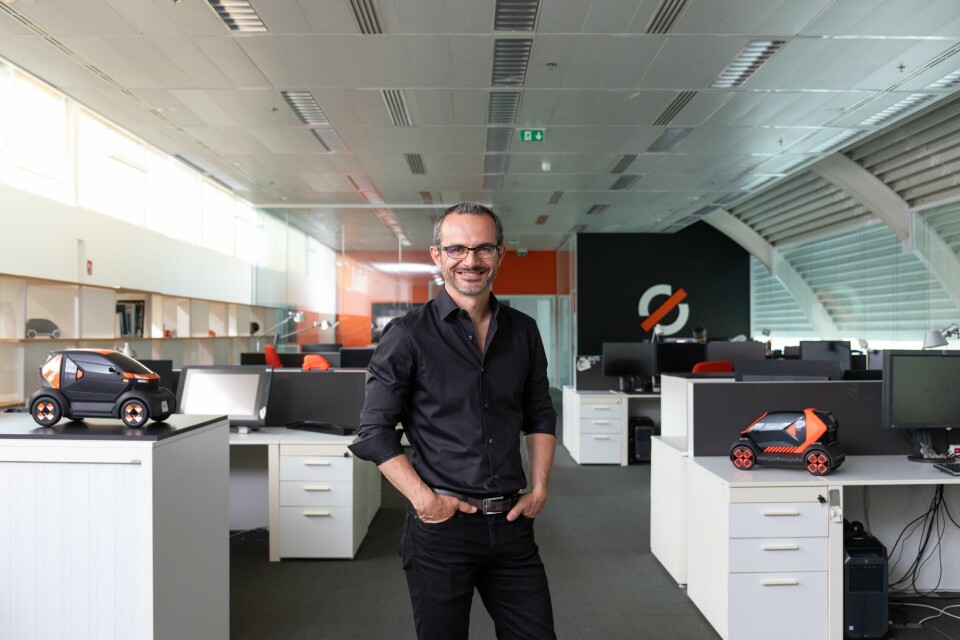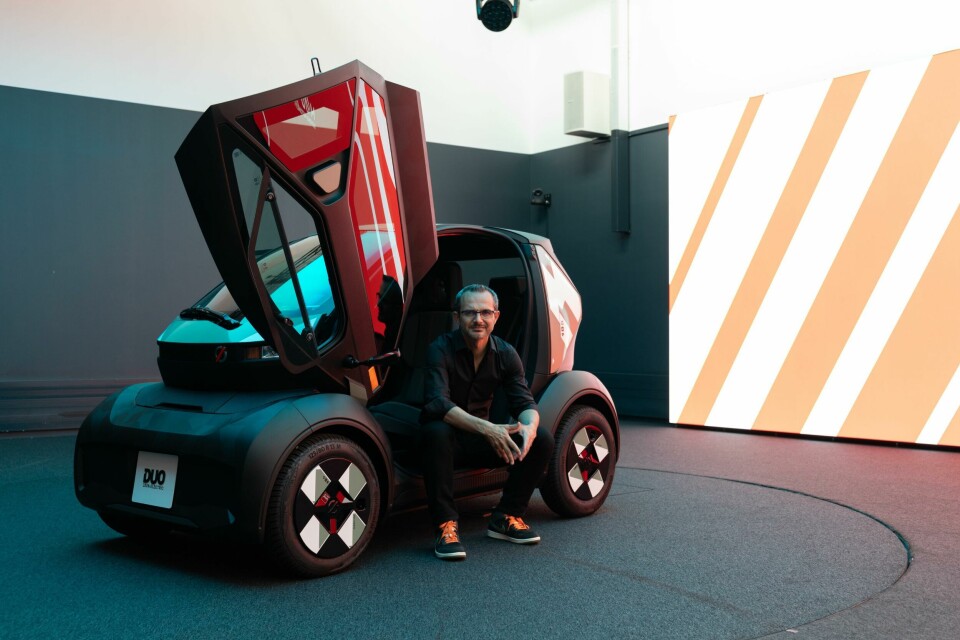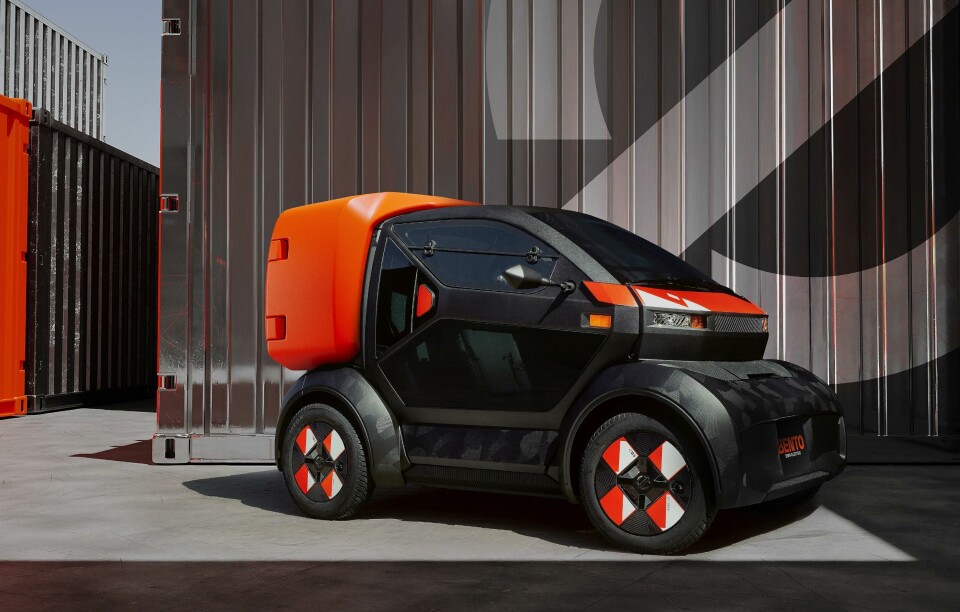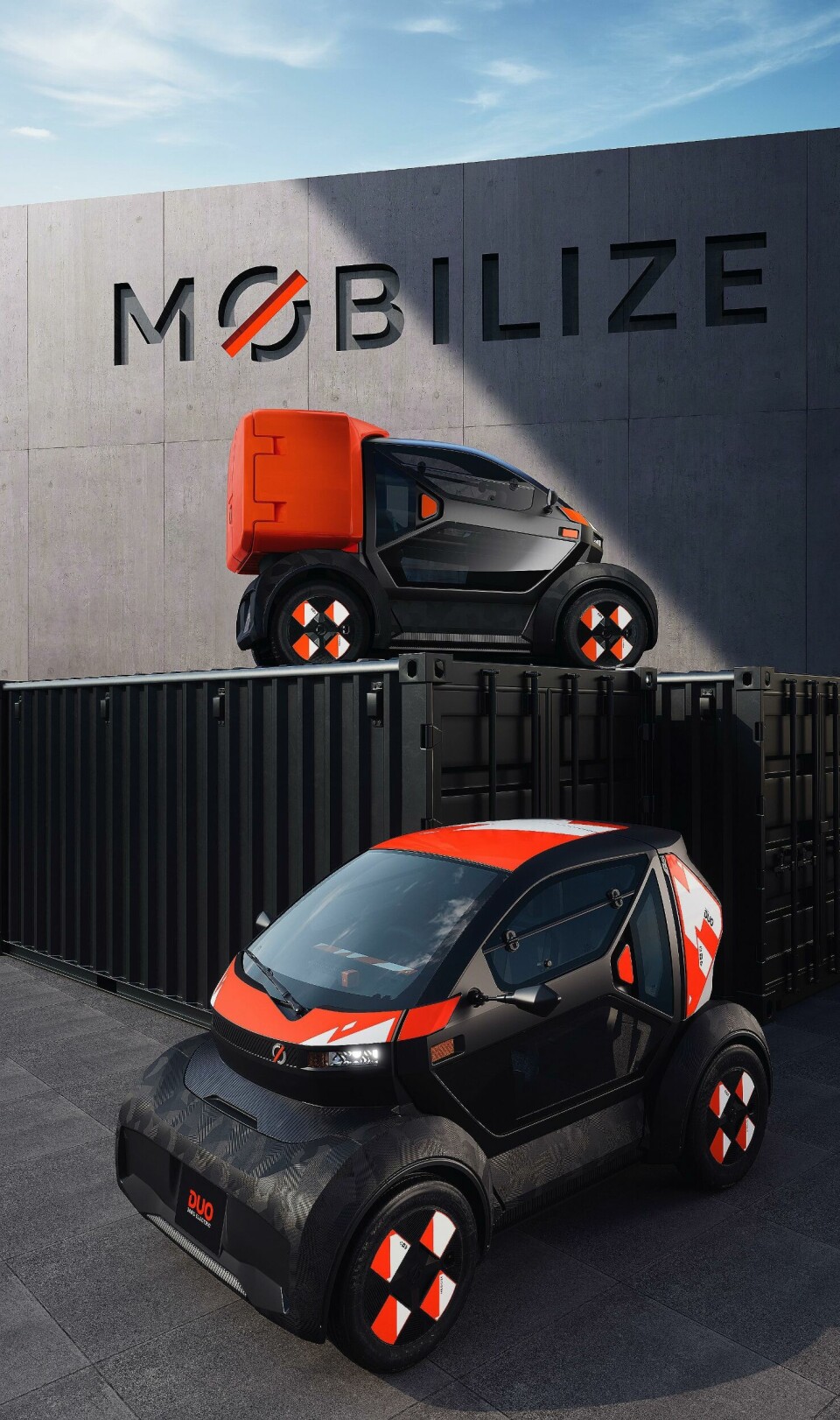
Jean-Philippe Salar: “Strong storytelling will generate good design”
Jean-Phillippe Salar, design director at Mobilize, explains the thought process behind the two electric vehicles set to launch in 2025
Mobilize is focused on micro mobility with two all-electric vehicles launching in 2025. The projects combine an urban feel with technology. The Duo is designed for ride- sharing passengers and daily commuting, while the Bento is dedicated for artisans and last-mile services. Both have a robust feel. We did not want them to feel too cartoony or cute, but in tune with pop culture.
Our creative advantage is how young our team is, some of whom are fresh from school. They come with less experience but have really fresh ideas, and an appetite to push the boundaries too
We designed camouflaged bumpers for both models to hide minor knocks from everyday city traffic and have a strong emphasis on functionality brought to life by the bold use of the brand’s colours. The logo represents the ecosystem of mobility, services and business held together by a strong orange graphic that creates an easily recognisable form. It recalls the minimalism of the overall project.

The first thing in the design process we needed to do was delete everything that was superfluous. We believe people will use these vehicles for about an hour a day. For sharing, it could be even less. And to simplify so intensely is a designer’s dream – it is like the Barcelona Pavilion by Mies Van der Rohe. It needs to be comfortable, have good connectivity and all the functions you need for going from A-to-B.
For instance, you will be able to customise the vehicle and choose a colour scheme and tradespeople and small business owners will be able to brand the storage unit on the Bento. And in targeting the sort of customers we want, it has to be sexy and cool. Our creative advantage is how young our team is, some of whom are fresh from school. They come with less experience but have really fresh ideas, and an appetite to push the boundaries too.
My dream was to become a car designer and a car is one of the most complex things to design: exterior, interior, design language, the importance of proportion and creating an emotional connection to the customer.
Technically, these vehicles are a challenge because they must be super-efficient. Weight is key because we have strict limits without the battery. The L6 category is limited to 425kg without battery (Duo), and the L7 version to 450 kg (Bento). Everything we design has to fit this package.

That feels especially relevant in the current landscape because, as we know, cars are getting bigger and heavier so if you do not have a limit, they can become oversized. It was almost like designing a diploma project back at school. Working within these constraints makes you more creative. We can be more sustainable through an economic use of parts. For example, the capsule and bumpers are made from recycled steel and plastic and sit on a skateboard platform.
My background and training as a product designer feeds into this project. Form follows function, you design around the package and the constraints. I studied product design and followed that with a masters degree in transportation design. My dream was to become a car designer and a car is one of the most complex things to design: exterior, interior, design language, the importance of proportion and creating an emotional connection to the customer.
I started at Renault in 1996 as a truck and LCV vehicle designer with the intention of capitalising on my product design experience before moving onto Renault cars where I worked on the third-generation Clio. I felt something was missing, however, so when I had the opportunity to work abroad for the company, I took it.

For five years I worked in India where I led the design studio in Mumbai. From there, I moved to Korea to be a project leader for three years, followed by a five-year stint in Bucharest, Romania, before heading up the Niva project as VP of design for Lada in Moscow, Russia. So yes, my journey in Renault has been very varied and intense, which is what I love about it.
You soon realise when you work overseas that you cannot design cars for all over the world from Paris. To understand what the market needs or wants, you need to be close to it. For example, in India a car is still a way to show your status in society but alongside that is a whole section of society whose only access to owning a car is via the ‘entry level’.
For this reason, a small car needs to be very attractive. The Korean market was more premium, which meant more sedans and SUVs. In Romania, I worked for Dacia, which was very rewarding, to participate in the journey of that brand. Design has played an integral role in Dacia’s story – it managed to break through the ceiling and go beyond what was expected.
I think that is crucial for designers. When you look at great designers like Ron Arad or Philippe Starck, they always bring something unexpected to their work, which takes it to the next level. Perhaps that is what is missing from car design at the moment. The storytelling around the genesis of the design is almost more important than the method. Strong storytelling will generate good design.



